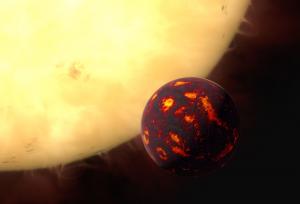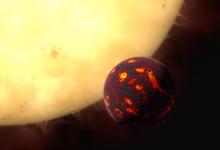Making Super-Earths [1]
There’s an old bit of advice about how to sculpt an elephant: Start with a piece of marble, then chip away everything that doesn’t look like an elephant. Nature may be following that advice in sculpting the planets known as super-Earths: Start with a sub-Neptune, then chip away everything that doesn’t look like a super-Earth.
A super-Earth is a rocky planet that’s up to a few times bigger and heavier than Earth. A sub-Neptune is a few times larger than that. It may have a rocky core surrounded by a thick atmosphere, like Neptune, one of the giant planets of our own solar system. Searches have revealed hundreds of examples of both classes of planet.
Astronomers have pondered how the two types form. And some recent studies suggest that super-Earths might form from sub-Neptunes.
The studies show that super-Earths are more common in older star systems than in younger ones. Since the planets in the studies are quite close to their host stars, that could mean that, given time, a star can turn a sub-Neptune into a super-Earth. Travis Berger, a member of one of the study teams, explained how in a press briefing in January.
BERGER: You start off with a sub-Neptune, you hit it with a bunch of high-energy radiation—and lots of it—over billions of years, and eventually you can strip off its atmosphere and make it become a super-Earth.
That might not be the only way to make a super-Earth. But it could be one way to sculpt some of the worlds in other star systems.
Script by Damond Benningfield
Keywords:
- Exoplanet [3]


